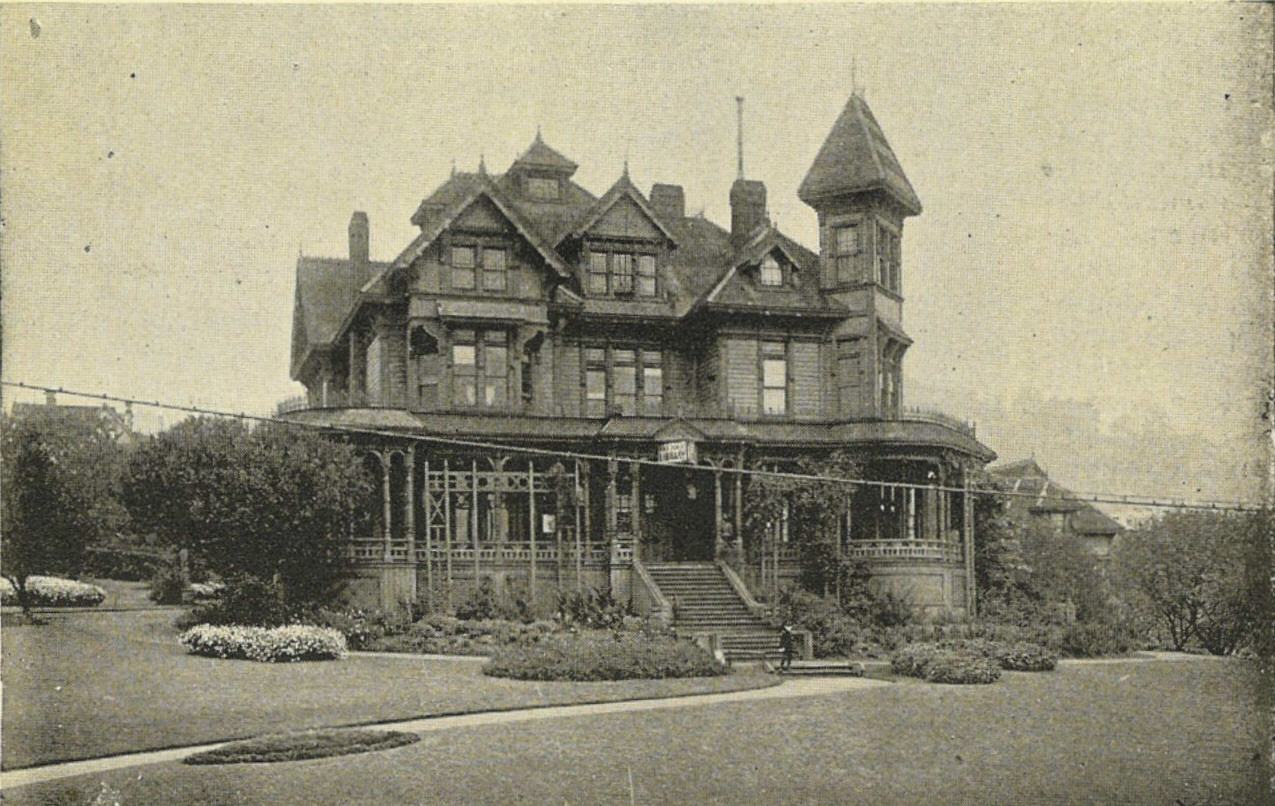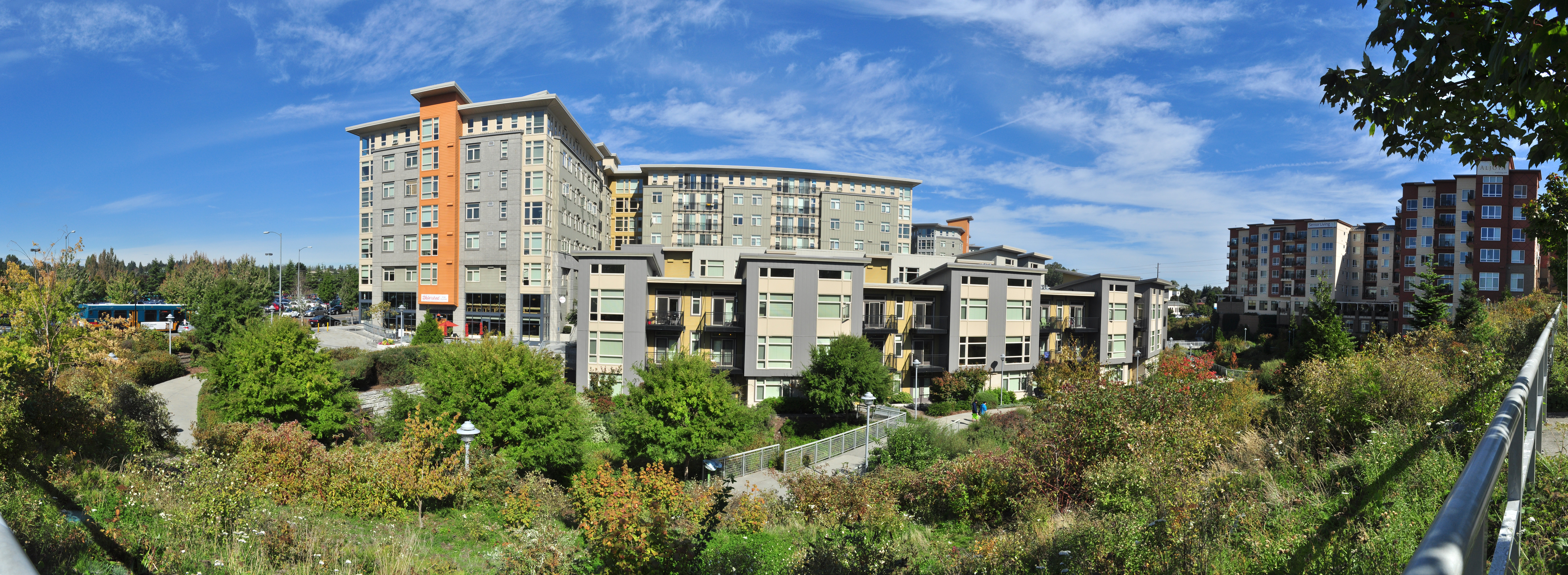|
Meadowbrook, Seattle
Meadowbrook is a neighborhood in the Lake City district (township annexed in 1954) of Seattle, Washington. Meadowbrook is centered on open fields adjacent to the Community Center, Meadowbrook swimming pool, and Nathan Hale High School. It is bounded on the south by NE 95th Street and the Wedgwood neighborhood, on the north by NE 120th Street and Cedar Park, on the west by Lake City Way NE ( State Route 522) and Victory Heights, and on the east by 35th Avenue NE and Matthews Beach. The neighborhood is almost entirely residential. There are no commercial strips, though there are some small restaurants and other businesses. The area is served by a number of public schools, including John Rogers Elementary, Jane Addams Middle School, and Nathan Hale High School. The site where Nathan Hale High School now sits was formerly Meadowbrook Golf Course. History Meadowbrook, with Thornton Creek near Lake Washington, has been inhabited since the end of the last glacial period (c. 8 ... [...More Info...] [...Related Items...] OR: [Wikipedia] [Google] [Baidu] |
List Of Neighborhoods In Seattle
The city of Seattle, Washington, contains many districts and neighborhoods. The city's former mayor Greg Nickels has described it as "a city of neighborhoods". Early European settlers established widely scattered settlements on the surrounding hills, which grew into neighborhoods and autonomous towns. Conurbations tended to grow from such towns or from unincorporated areas around trolley stops during the 19th and early 20th centuries; the city has consequently suffered from transportation and street-naming problems. Definition of Seattle neighborhoods Seattle was established during an boom and bust, economic boom fueled by the timber industry; its early years were characterized by hasty expansion and development, under which residential areas were loosely defined by widely scattered plats. This arrangement was further solidified by the establishment of locally initiated community clubs, public libraries, public schools, and public parks, which created a sense of community and ... [...More Info...] [...Related Items...] OR: [Wikipedia] [Google] [Baidu] |
Thornton Creek
Thornton Creek is of urban creeks and tributaries from southeast Shoreline through northeast Seattle to Lake Washington. Its watershed, the largest in Seattle, exhibits relatively dense biodiversity for an urban setting;Brokaw it is home to frogs, newts, ducks, herons, and beavers, in addition to more than 75,000 people. From west of Jackson Park Golf Course in Shoreline,Hodson from Sunny Walter-Pillings PondWalter in Licton Springs–North College Park, and north Northgate Thornton Creek flows through Maple Leaf and Lake City, including the Victory Heights, Meadowbrook, and Matthews Beach neighborhoods, and empties into the lake at Matthews Beach Park. Habitat and stewardship Thornton Creek flows through Meadowbrook Pond, known for its birdwatching and resident beavers. The Thornton creek watershed is land formerly inhabited by the Duwamish tribe. One of the Duwamish's historic longhouse sites was located near the mouth of Thornton Creek at Mathews beach. Early ... [...More Info...] [...Related Items...] OR: [Wikipedia] [Google] [Baidu] |
Seattle Public Library
The Seattle Public Library (SPL) is the public library system serving the city of Seattle, Washington. Efforts to start a Seattle library had commenced as early as 1868, with the system eventually being established by the city in 1890. The system currently comprises 27 branches, most of which are named after the neighborhoods in which they are located. The Seattle Public Library also includes Mobile Services and the Central Library, which was designed by Rem Koolhaas and opened in 2004. The Seattle Public Library also founded the Washington Talking Book & Braille Library (WTBBL), which it administered until July 2008. All but one of Seattle's early purpose-built libraries were Carnegie libraries. Although the central Carnegie library has since been replaced twice, all the purpose-built branches from the early 20th century survive; however, some have undergone significant alterations. Ballard's former Carnegie library has since housed a number of restaurants and antique stor ... [...More Info...] [...Related Items...] OR: [Wikipedia] [Google] [Baidu] |
Northgate, Seattle
Northgate is a neighborhood in north Seattle, Washington, named for and surrounding Northgate Mall, the first covered mall in the United States. Wilma referenced Walt Crowley with Paul Dorpat (Photography Editor), ''National Trust Guide: Seattle'' (New York: John Wiley & Son, Inc., 1998), 209; L. B. Fussell, "Section To Be Known As 'Northgate'", ''The Seattle Times'', February 22, 1948; "Features Of Northgate Shopping Area Outlined", ''The Seattle Times'', February 1, 1950; "Polar Bear Cubs And $35,000 Car Vie At Northgate", ''The Seattle Times'', May 23, 1950; "Plenty of Parking Space At Northgate", ''The Seattle Time ... [...More Info...] [...Related Items...] OR: [Wikipedia] [Google] [Baidu] |
Daylighting (streams)
Daylighting can be defined as "opening up buried watercourses and restoring them to more natural conditions". An alternative definition refers to "the practice of removing streams from buried conditions and exposing them to the Earth's surface in order to directly or indirectly enhance the ecological, economic and/or socio-cultural well-being of a region and its inhabitants”. The term is used to refer to the restoration of an originally open-air watercourse, which had at some point been diverted below ground, back into an above-ground channel. Typically, the rationale behind returning the riparian environment of a stream, wash, or river to a more natural state is to reduce runoff, create habitat for species in need of it, or improve an area's aesthetics. In the UK, the practice is also known as deculverting. In addition to its use in urban design and planning the term also refers to the public process of advancing such projects. According to the Planning and Development ... [...More Info...] [...Related Items...] OR: [Wikipedia] [Google] [Baidu] |
Bothell, Washington
Bothell () is a city in King County, Washington, King and Snohomish County, Washington, Snohomish counties in the U.S. state of Washington (state), Washington. It is part of the Seattle metropolitan area, situated near the northeast end of Lake Washington. As of the 2020 United States census, 2020 census, it had a population of 48,161 residents. History The Sammamish River valley from Lake Washington to Issaquah Creek was historically inhabited by the indigenous Sammamish people (also known as the "s-tah-PAHBSH", or "willow people"), a Coast Salish group with an estimated population of 80 to 200 by 1850. Among them were the "ssts'p-abc" ("meander dwellers"), who settled near the river's mouth at two villages—the larger of which was "tlah-WAH-dees" between modern-day Kenmore, Washington, Kenmore and Bothell. The Sammamish were removed from their lands in 1856 following the Puget Sound War and moved to the Port Madison Indian Reservation, Port Madison and Tulalip Indian Reservat ... [...More Info...] [...Related Items...] OR: [Wikipedia] [Google] [Baidu] |
Burke–Gilman Trail
The Burke–Gilman Trail is a rail trail in King County, Washington. The multi-use recreational trail is part of the King County Regional Trail System and occupies an abandoned Seattle, Lake Shore and Eastern Railway (SLS&E) corridor. A portion of the Burke–Gilman trail is managed by the City of Seattle. The trail begins at 11th Avenue NW in Ballard and follows along the Lake Washington Ship Canal and north along Lake Washington, designated as ending in Bothell. Route The trail is a substantial part of the of signed bike routes in Seattle and the of trails in the King County Trails System. A segment of the Burke–Gilman portion, opened in July 2005, runs for from NW 60th Street and Seaview Avenue NW to the Ballard Locks. The main trail resumes at 11th Avenue NW and NW 45th Street and runs to Blyth Park in Bothell. There, it becomes the Sammamish River Trail segment, which parallels the Sammamish River for to Redmond. The Burke–Gilman trail runs along the Fremo ... [...More Info...] [...Related Items...] OR: [Wikipedia] [Google] [Baidu] |
Clearcutting
Clearcutting, clearfelling or clearcut logging is a forestry/logging practice in which most or all trees in an area are uniformly cut down. Along with shelterwood and seed tree harvests, it is used by foresters to create certain types of forest ecosystems and to promote select species that require an abundance of sunlight or grow in large, even-age stands. Logging companies and forest-worker unions in some countries support the practice for scientific, safety and economic reasons, while detractors consider it a form of deforestation that destroys natural habitats and contributes to climate change. Clearcutting is the most common and economically profitable method of logging. However, it also may create detrimental side effects, such as the loss of topsoil, the costs of which are intensely debated by economic, environmental and other interests. In addition to the purpose of harvesting wood, clearcutting is used to create land for farming. Ultimately, the effects of clearcut ... [...More Info...] [...Related Items...] OR: [Wikipedia] [Google] [Baidu] |
Coast Salish
The Coast Salish is a group of ethnically and linguistically related Indigenous peoples of the Pacific Northwest Coast, living in the Canadian province of British Columbia and the U.S. states of Washington and Oregon. They speak one of the Coast Salish languages. The Nuxalk (Bella Coola) nation are usually included in the group, although their language is more closely related to Interior Salish languages. The Coast Salish are a large, loose grouping of many nations with numerous distinct cultures and languages. Territory claimed by Coast Salish peoples span from the northern limit of the Salish Sea on the inside of Vancouver Island and covers most of southern Vancouver Island, all of the Lower Mainland and most of Puget Sound and the Olympic Peninsula (except for territories of now-extinct Chemakum people). Their traditional territories coincide with modern major metropolitan areas, namely Victoria, Vancouver, and Seattle. The Tillamook or Nehalem around Tillamook, Oreg ... [...More Info...] [...Related Items...] OR: [Wikipedia] [Google] [Baidu] |
Lushootseed
Lushootseed (txʷəlšucid, dxʷləšúcid), also Puget Salish, Puget Sound Salish or Skagit-Nisqually, is a language made up of a dialect continuum of several Salish tribes of modern-day Washington state. Lushootseed is one of the Coast Salish languages, one of two main divisions of the Salishan language family. Its pre-contact range extended from modern-day Olympia, Washington to Vancouver, British Columbia, spoken by roughly 12 thousand at its peak. The dialects of the language can be split into two categories: northern and southern, which can further be split into dialects spoken by the individual peoples who spoke it. Today, it is mostly used in heritage and symbolic purposes, like on signage or place names. It is seldom spoken today, and is classified as Critically Endangered by the UNESCO Atlas of the World’s Languages in Danger. Phonology Lushootseed has a complex consonantal phonology and 4 vowel phonemes. Along with more common voicing and labialization contra ... [...More Info...] [...Related Items...] OR: [Wikipedia] [Google] [Baidu] |
Duwamish Tribe
The Duwamish ( lut, Dxʷdəwʔabš, ) are a Lushootseed-speaking Native American tribe in western Washington, and the indigenous people of metropolitan Seattle, where they have been living since the end of the last glacial period (c. 8000 BCE, 10,000 years ago). The Duwamish Tribe descends from at least two distinct groups from before intense contact with people of European ancestry—the ''People of the Inside'' (the environs of Elliott Bay) and the ''People of the Large Lake'' (Lake Washington)—and continues to evolve both culturally and ethnically. By historic language, the Duwamish are (Skagit-Nisqually) Lushootseed; Lushootseed is a Salishan language. Adjacent tribes throughout the Puget Sound-Strait of Georgia basin were, and are, interconnected and interrelated, yet distinct. Today, some Duwamish people are enrolled in the federally recognized Tulalip Tribes of Washington as well as the Muckleshoot Tribe. The present-day Duwamish Tribe developed in parallel with the ... [...More Info...] [...Related Items...] OR: [Wikipedia] [Google] [Baidu] |








